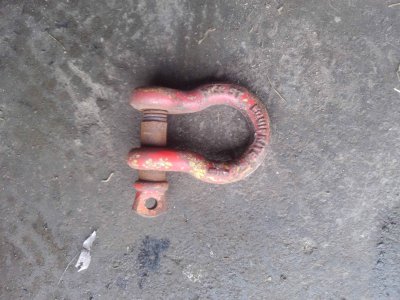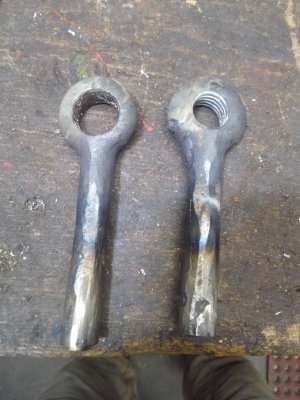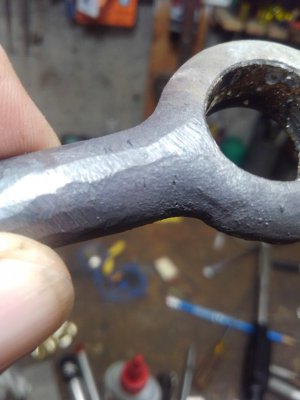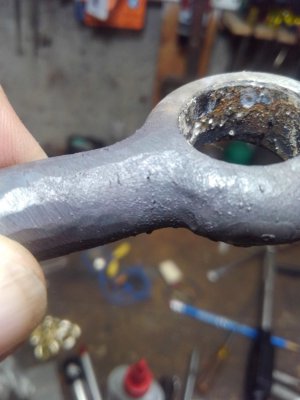Getting ready to fabricate a connector end for a winch cable, I figured I could straighten out this oversize 5/8" shackle I found by the side of the road and weld it to a thick washer. I heated it up a nice bright red until I could bend it with some pliers. As it straightened some large cracks formed, some almost all the way across the thickness. They formed about 1/2 way around the circle area and started at the ID. I grabbed the grinder, notched some big sections and repaired them with weld. I wish I had taken a photo first because the cracks were impressive. Some grinding and cooling and I can still see other small cracks in the metal. I decided to scrap these parts and start over with new cold rolled steel. But I am wondering why did it crack, what did I do wrong? The shackle was painted and I think galvanized based on the nasty smoke as I heated it. I have heated and bent a lot of steel over the years and never seen anything quite like this.

Shackle heated bent, welded and ground down.

Small cracks in part, I don't think I would trust it even with more grinding and welding. If these snapped with 9000 lb on the cable, I am not sure where the cable or parts might end up. I use 5/16 high strength chain so this is way oversize but still...



Shackle heated bent, welded and ground down.

Small cracks in part, I don't think I would trust it even with more grinding and welding. If these snapped with 9000 lb on the cable, I am not sure where the cable or parts might end up. I use 5/16 high strength chain so this is way oversize but still...



